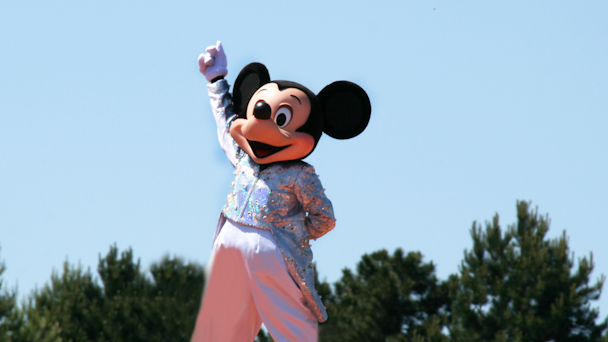Disney brings back Bob Iger, with his sights set on changing its streaming and media business
Returning CEO has already begun dismantling corporate structure set by his predecessor.

Bob Iger Is back at the helm of Disney
The Walt Disney Company board took the shock decision this week (November 21) to bring Bob Iger out of retirement, ousting his hand-picked replacement Bob Chapek in the process.
Big changes are expected to impact Disney’s media and advertising departments, with Iger having already removed media sales boss Kareem Daniels.
Advertisement
Iger stepped down as chief executive officer in February 2020 and selected Chapek as his successor, but stayed on as executive chairman until December 2021 to help steer the company through the pandemic.
His return is a two-year interim reappointment, which the board hopes will see Disney out of a turbulent period while it hunts another permanent replacement. Shares in Disney rose 6.3% on the news.
With 15 years at the top, Iger was the orchestrator of some of Disney’s biggest acquisitions, including its purchase of Marvel, Star Wars and Pixar Animation Studios. He also oversaw the 20th Century Fox merger, where Disney took control of National Geographic and FX. The success of Disney’s streamer is largely owed to bringing all of those assets under one roof to offer a diverse roster of programming for all ages.
Advertisement
It is Iger’s ambition to dismantle Disney’s corporate structure and place decision-making power back in the hands of creative execs. In his first email to Disney staff, he wrote: ”I fundamentally believe storytelling is what fuels this company...and it belongs at the center of how we organize our business.”
On his first day back, Iger removed Daniels who had overseen the Disney Media and Entertainment Distribution department, which was formed under Chapek in 2020. Daniels’s removal is said to be the first step in Iger’s plans for that unit.
Suggested newsletters for you
Chapek’s reign
Chapek’s ousting was the result of a revolt from senior Disney execs who went to the board claiming they had lost confidence in the 33-year Disney veteran. This distrust in his vision was compounded by Disney’s abysmal third-quarter earnings, which reported a $1.5bn loss to its streaming business despite adding 12.1 million subscribers. Disney also missed its total revenue estimates by $1bn, posting revenues of $20.1bn across the quarter.
After publishing its losses, Chapek announced job cuts, telling staff the business would have to “make tough and uncomfortable decisions”. Disney blamed the lack of premium access to content for its financial strife – box office films cost $30 to stream.
Chapek was responsible for Disney’s decision to introduce an ad tier, which is set to land on December 8. He set the Disney+ ad tier at $7.99 and upped its standard tier by $3 to $10.99, despite Iger’s previous strategy of gradual small price hikes.
-
Disney+ has the power to ‘determine the future’ of streaming ads... and it just did
-
Why Disney+ and Netflix plans for targeting kids with ads may be different, yet the same
Disney’s pricing sits $1 higher than Netflix’s ad product, which rolled earlier this month. Like Netflix, Disney isn’t expecting its ad option to significantly grow subscriber numbers but instead accelerate revenue and profit.
Ownership over Hulu
Disney and Comcast were due to renegotiate the ownership of Hulu in January 2024, but it’s being reported that Disney intends to bring the deal forward and up its 67% stake to 100%. According to Ampere analysts, a combined Disney/Hulu would carry the biggest number of US titles of any streaming service – approximately 30% compared with Netflix’s 23%.
Disney has been quietly investing in Hulu’s catalog to triple the number of shows and films it has distribution rights to from 6% in 2016 to 19% in 2022. At the same time, Ampere reports that competing studios have reduced their contribution to Hulu’s pipeline. According to Ampere, content from NBCUniversal, Paramount and Warner Bros Discovery now make up less than 10% of all TV shows and movies on Hulu.
For more Future of TV coverage from The Drum subscribe to our newsletter here.

